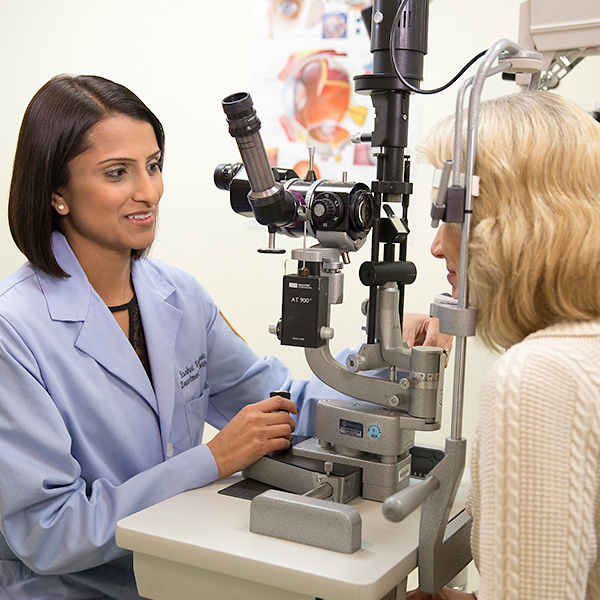Eyelid Tumors (Benign or Malignant)
Overview and Facts about Eyelid Tumors (Benign or Malignant)
Eyelid tumors develop when normal cells found on the surface of the eyelid begin to grow and multiply uncontrollably to form a small mass or tumor.
Cancerous eyelid tumors are categorized by the type of cell the tumor develops from and include four types: basal cell carcinoma (90% of eyelid tumors), squamous cell carcinoma, malignant melanoma, and sebaceous carcinoma. The first three types arise from epithelial or skin cells, while sebaceous carcinoma is a type of cancer arising from oil glands in the eyelid.
Signs and Symptoms of Eyelid Tumors (Benign or Malignant)
Patients may not show any signs or symptoms of eyelid tumors, or they may present symptoms similar to other eye conditions and require testing to confirm diagnosis.
Signs and symptoms of eyelid tumors:
- Nodular growth on the eyelid, that spreads or changes color
- Change in appearance or thickening of the eyelid skin
- Swelling of the eyelid
- Chronic infection of the eyelid
- An ulceration (sore) on the eyelid that does not heal
- Loss of eyelashes or distortion of the eyelid position
Causes and Risk Factors of Eyelid Tumors (Benign or Malignant)
What causes eyelid tumors to develop is largely unknown, but genes that signal certain cellular activities may mutate causing uncontrollable growth and division.
Risk factors for developing eyelid tumors include:
- Exposure to UV radiation
- Having fair skin
- Being a man over age 50
- History of sunburn
- Genetic disposition
- Previous skin cancer
- Precancerous skin conditions
Tests and Diagnosis of Eyelid Tumors (Benign or Malignant)
To diagnose eyelid tumors, a doctor will examine your eyes and discuss your medical history and symptoms. A definitive diagnosis requires taking a small sample of tissue, or biopsy, to look for the presence of cancer cells under a microscope.
If cancer is detected, imaging tests (CT scans, MRI, ultrasound) may be recommended to visualize if cancer has spread to other parts of the body.
Treatment and Care for Eyelid Tumors (Benign or Malignant)
Treatment of eyelid tumors depends on the size and location of the tumor, type of cancer, and overall health of the patient. Surgical removal of the tumor is common and includes biopsy techniques, Mohs surgery, cryosurgery, and reconstructive procedures. Surgery may result in scarring or deformity of the eyelid, sometimes causing other eye conditions such as problems with tear drainage or changes to your vision or appearance.
In rare cases, if the tumor has caused a loss of vision, it may be necessary to remove the entire eye and replace it with an artificial eye.
Other more aggressive treatments for eyelid cancer include radiation therapy, which is used to target and destroy cancer cells but has significant side effects, and chemotherapy, which interferes with the cancer cells’ ability to grow and divide. In eyelid cancer, topical chemotherapy is used to treat the affected area.

